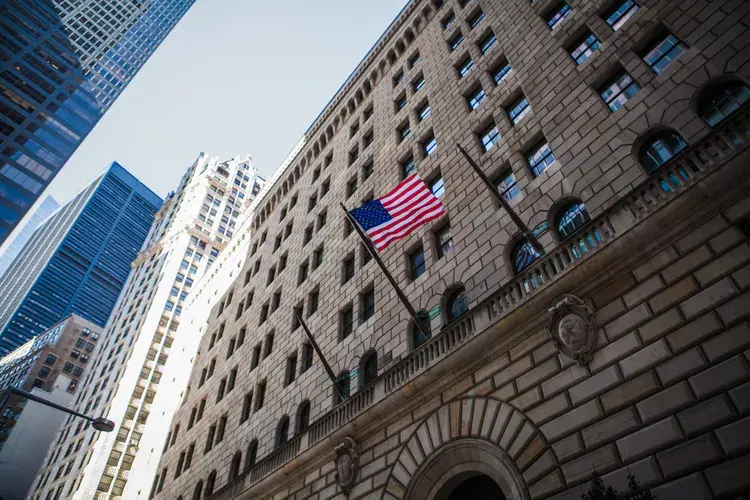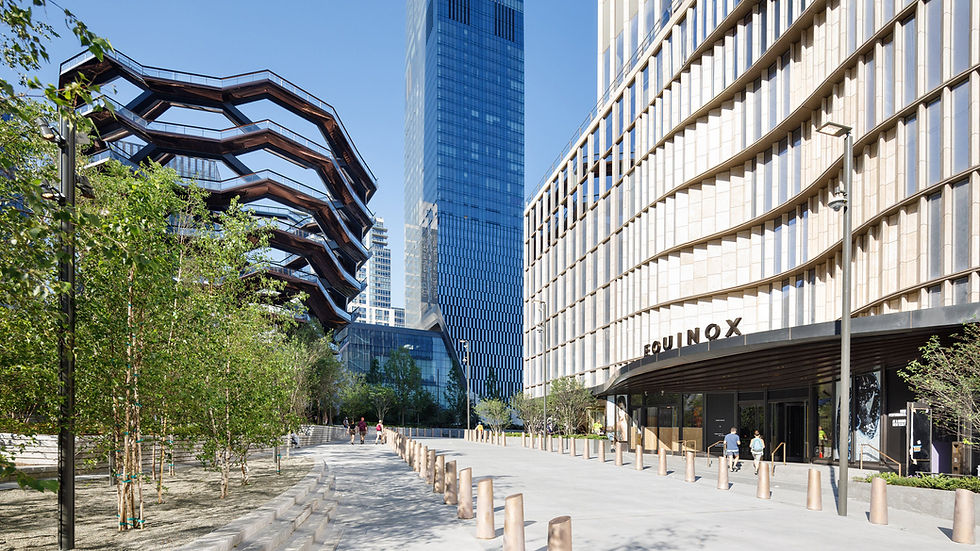Weekly Market Report - October 31, 2019
- Oct 31, 2019
- 5 min read
In Manhattan, leases of law firm space are expiring between 2021 and 2024. A total of 8.5 million space will become available during that time. Along with this and the rents continuing to rise, the pressure is on for these firms. In Midtown, the real estate market rose 15% in the first half of 2019, and it is still the top place for law firms to be. One reason for the firms shrinking is that they are using less space than before and prefer more modern designs. Also, there has been a 7% drop in downtown rents year over year. The legal sector is 9.3% of all available commercial real estate space in Manhattan. For rent in law firms, had a 9% increase from 2017-2018 and has grown 15% since then. Rent per square foot in Midtown for law firms is $99.62, which is higher than the overall Midtown average rent of $81.72.
WeWork’s latest expansion is in Brooklyn’s Dock 72, a new office building on the waterfront, where the company leased a third of the building (220k sf). However, like WeWork’s other properties, the offices sit almost empty. Including this new space, WeWork is adding over 10 million sf of office space to their collection in the United States and Britain. However, as we have seen the company crumble, there might not be a lot left to do to save it from collapsing forever. While SoftBank says there are going to be focusing on growth and devote its energy to major markets, including New York and San Francisco, it will not be simple to rebuild this falling empire. Including Adam Neumann, who was forced out, several other senior executives have left the company. WeWork has had several huge losses and were spending billions of dollars a year. One big reason for those losses is that WeWork can’t stop renting space. By the end of the year, the company will have three times the space of Apples spaceship-shaped headquarters. Another way SoftBank is trying to cut down costs is by not engaging in acquisitions. This year, WeWork paid $43 million for a small co-working company called Spacious, and according to their finances, their expenses were way more than their revenue.
At 1,401 feet tall, an unbeatable location, and amazing amenities, One Vanderbilt is coming out on top. Between 42nd and 43rd Street, this building will “transform the entire neighborhood” by also investing in the subway infrastructure and updating the landscape adjacent to the property. Not including One Vanderbilt, Midtown is already at the top of the city’s commercial market. During the 2Q, leasing rose 8% and the vacancy rate decreased 50 basis points. This building will just increase the momentum further. Connecting straight to Grand Central Terminal, it will provide access to five subway lines, Metro-North and in 2022, Long Island Rail Road will be joining in on the movement. SL Green invested $220 million into the station giving it wider staircases and additional elevators. However, it’s the amenities that really make this building stand out: With column free floors, incredible 360-degree views through the floor-to-ceiling windows, it will also have a 30k sf tenant-only floor, which offers large meeting spaces, a club-style lounge, and an out of this world terrace. Chef Daniel Boulud will be opening a new 11k sf restaurant in the building, as well as, adding his grab-and-go restaurant on the ground floor. The 1.7 million sf tower is already 60 percent leased. It is also raising “the global standard on sustainable design and construction” as SL Green prioritized to using plant-based materials and reducing demand on transportation fuel. In the matter of months, people will get to experience the new office experience with One Vanderbilt.
Soho and Noho have some of the highest residential and retail rents in the city. However, the talks of re-zoning, legalizing residential and retail areas, could radically shake things up. The zoning in which they are in now make apartments and retail stores illegal without a special permit. Getting this permit takes up to two years and cost owners tens of thousands of dollars. Before they can even apply for the permit and get a retail tenant, the landlord must advertise in the newspaper for an industrial tenant. Also, with the current zoning, retail stores are capped at 10k sf and can only be on the ground floor. Nike and Zara have been made exceptions as they split each floor into its own mini store with its own cashier. In Soho already, there is 3 million sf of retail. Some say that these stores have oversaturated the neighborhood, dragging down asking rents along Broadway between Houston and Canal Street. Others say Soho has too many large stores and claim that “they are not only violating the zoning rules but lead to disruptions like late-night deliveries and shops leaving their lights on all night”. The new zoning law hopes to regulate parking and trash pick-up, as well as, enforcing existing laws. The plan for rezoning will be shown to the Manhattan Community Board on November 20th.
No one knows when the next real estate downturn is going to happen – but we can prepare for it. The last downturn was in 2008, and that ended a 22-year super cycle, which started after the previous downturn in 1986. Both crashes were caused by “instability in the banking sector that occurred when under-capitalized banks failed, and the high yield bond burst”. But we have since then taken precautions – introducing the Dodd-Frank Wall Street Reform and Consumer Protection Act. Dodd-Frank created multiple technological innovations that gives banks and regulators access to real time data on the financial system. It also adopted Base III, which helps prevent banking crisis on an international level and requires banks to increase their reserves on loans based on their risk levels. The Financial Stability Oversight Council (FSOC) consolidates all financial oversite by the federal government and allows the government to act more efficiently to protect against financial instability. Also, Dodd-Frank has trillions of dollars of private equity sitting and waiting for distressed investing opportunities. In conclusion, while Dodd-Frank doesn’t stop a downturn from happening, it surely does create less stress and the federal government can act quickly if a situation arises.
After SoftBank’s almost $10 million bailout of WeWork, investors and credit-rating firms are becoming concerned about rising risks and weak controls at the company. The burden of WeWork will fall on SoftBank’s shoulders, and the funds it said it would give to WeWork will come straight from their pockets. At the end of June, the company said it had $27 billion cash on hand. In the past week, SoftBank’s shares on the Tokyo Stock Exchange fell 6.6% ($36.97). Some investors are concerned that while they are supporting WeWork, they don’t know if SoftBank will be able to support Vision Fund at the same time. SoftBank’s CEO is trying to focus on lowering the risk and improving the governance at the fund and the companies it has invested in all while pushing startups to focus on profits. SoftBank has more than $160 billion in debt. If the company continues to invest into WeWork or bails out another company, rating companies might have to reconsider how they view SoftBank.
What’s going on in the market today?
· Large deals and TAMI tenants are continuing to increase the leasing velocity in the 3Q
· Midtown South had a 4.6% increase in taking rents, which made it above the Midtown average
· Downtown availability decreased to 11.7%
· 21.9 million sf will be available in 2023 after construction
· Co-working spaces took a dramatic turn in the 3Q because of WeWork. Co-working is 4% of all Manhattan inventory
· While TAMI has over 2 million sf spread through the city, legal has the biggest negative amount of sf this year at almost -500k
· Asking rents are on the rise as well as base taking rents









Comments